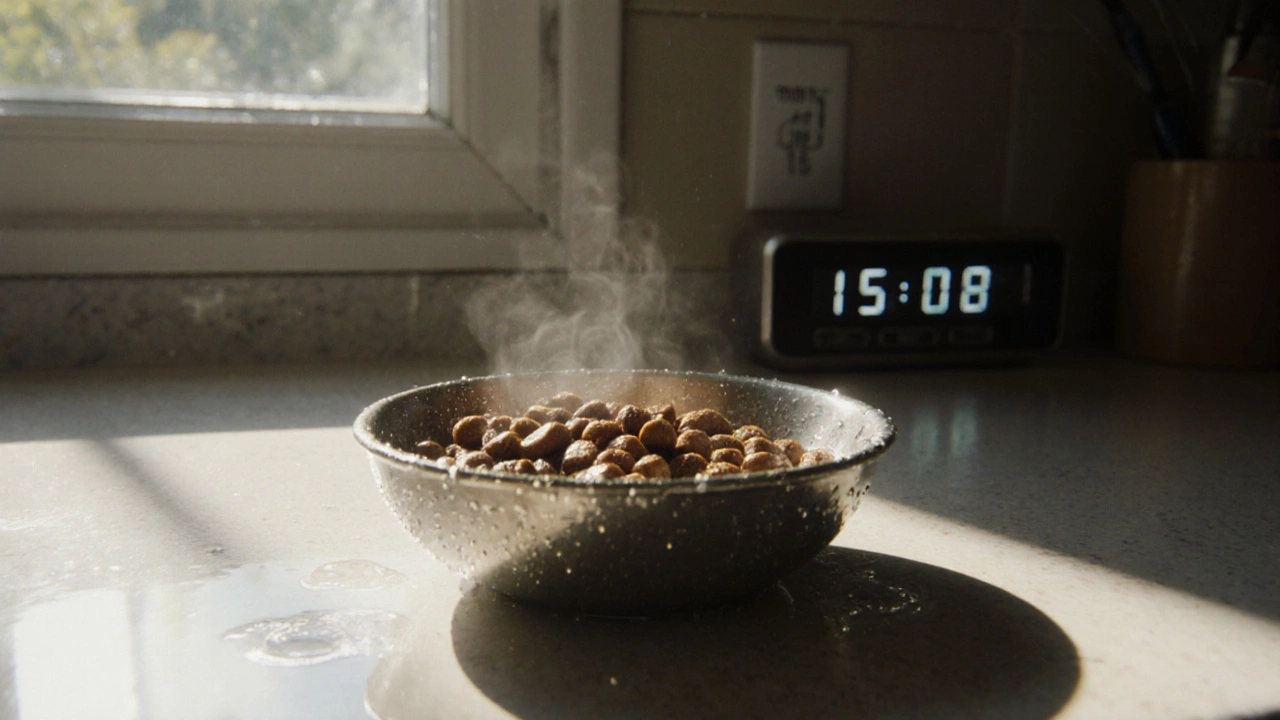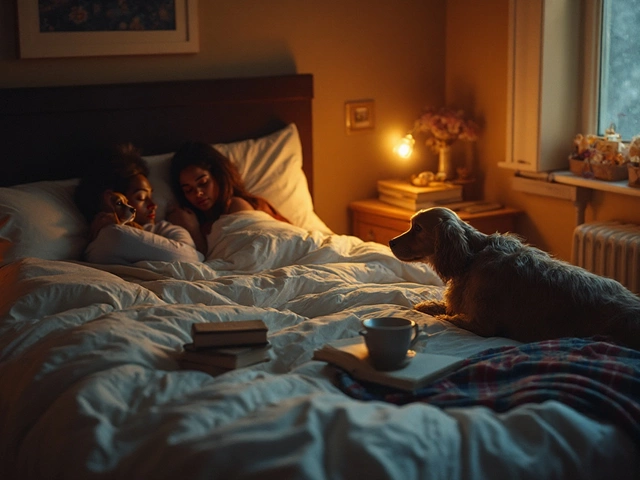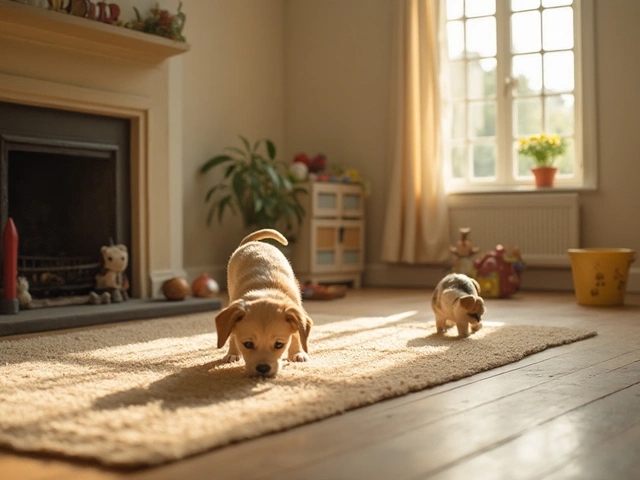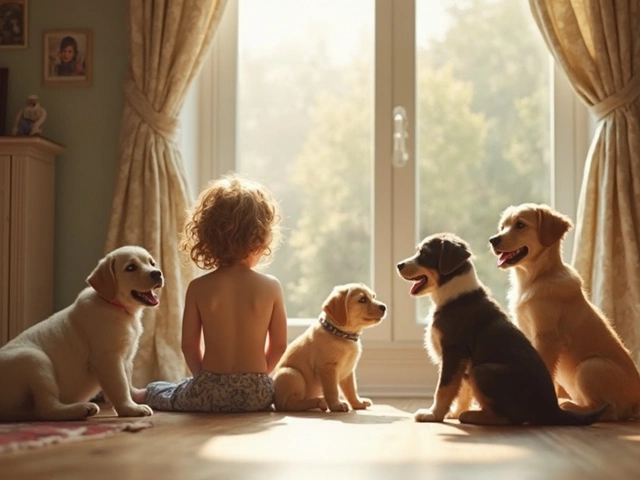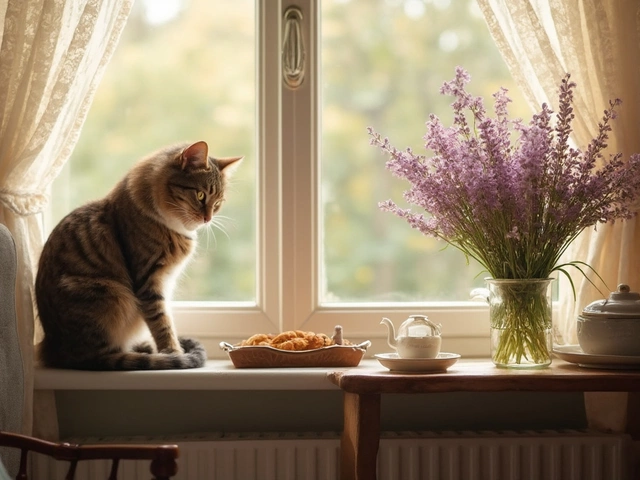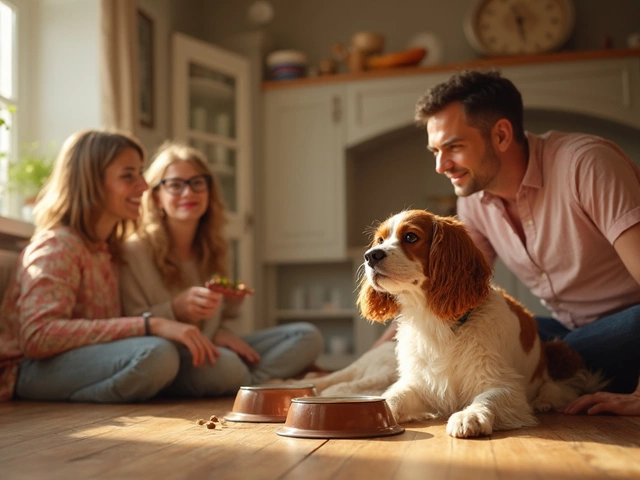Wet Cat Food Safety Calculator
How long can wet cat food sit safely?
This calculator uses research data to determine safe exposure times based on temperature. Remember: Bacteria multiply rapidly in moist food - never leave wet cat food out longer than recommended.
Leaving a bowl of wet cat food out for hours might seem harmless-after all, your cat eats it right away, right? But here’s the truth: wet cat food doesn’t just go stale. It can turn into a breeding ground for harmful bacteria in under an hour, especially in warm kitchens or near sunny windows. If your cat leaves even a small portion behind, you’re risking more than a wasted meal-you’re putting their health on the line.
How fast does wet cat food spoil at room temperature?
Once opened, wet cat food starts to break down almost immediately. In temperatures above 20°C (68°F), which is common in most New Zealand homes during spring and summer, the food becomes unsafe after just 1 to 2 hours. By the 4-hour mark, bacterial growth like Salmonella and E. coli can reach dangerous levels. The moisture in wet food makes it ideal for bacteria to multiply-much faster than dry kibble.
A 2023 study from the University of Melbourne’s Veterinary Food Safety Lab found that opened wet cat food left at 25°C had over 10,000 colony-forming units (CFUs) of harmful bacteria per gram after just 3 hours. That’s more than 100 times the safe limit for pet food set by the FDA. Cats have strong stomachs, but they’re not immune. Vets in Auckland report a 30% spike in gastrointestinal cases during warmer months, often linked to spoiled wet food left out overnight.
What happens when wet cat food goes bad?
It’s not always obvious when food has spoiled. You might not smell anything off, and your cat might still eat it. But here’s what’s happening inside that bowl:
- Bacterial growth: Pathogens multiply rapidly in moist, protein-rich food.
- Oxidation: Fats break down, creating rancid flavors that make the food unpalatable.
- Mold: In humid conditions, mold can appear as fuzzy spots, even on sealed containers left open.
- Nutrient loss: Vitamins like B1 and E degrade quickly, reducing the food’s nutritional value within hours.
Signs your cat’s food has gone bad include a sour or ammonia-like smell, slimy texture, discoloration, or visible mold. If your cat suddenly refuses a food they used to love, it might not be pickiness-it could be instinct telling them it’s unsafe.
How long does wet cat food last in the fridge?
Refrigeration is your best friend. Once opened, cover the unused portion with a tight-fitting lid or wrap it tightly in plastic wrap or beeswax wrap. Store it in the coldest part of the fridge-usually the back, not the door.
Properly stored, wet cat food stays safe for up to 3 days. After that, even if it looks and smells fine, bacteria can still be growing below the surface. Don’t rely on your nose. The USDA recommends discarding opened canned pet food after 72 hours, and that’s a rule worth following.
Some brands claim their food lasts up to 5 days refrigerated, but those claims are based on lab conditions, not real homes. Your fridge might be warmer than you think, especially if it’s old or frequently opened. When in doubt, throw it out.
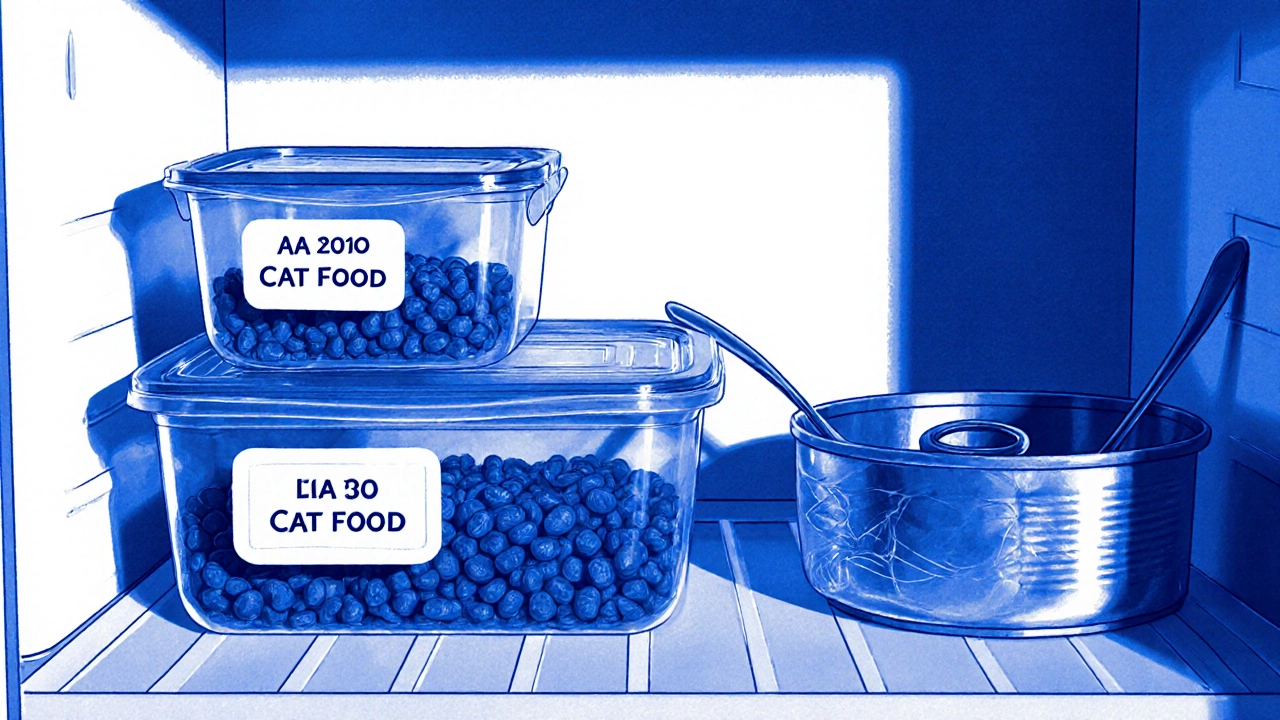
Can you freeze wet cat food?
Yes-and it’s one of the smartest moves if you buy in bulk or have a cat who eats slowly. Freezing stops bacterial growth completely. Portion out leftovers into ice cube trays or small silicone molds, then transfer them to a freezer bag. Each cube is roughly one meal.
When you’re ready to serve, thaw a cube in the fridge overnight. Never microwave wet cat food straight from frozen-it creates hot spots that can burn your cat’s mouth. If you’re in a hurry, run the sealed container under cool water until thawed.
Freezing doesn’t affect the texture or nutrition much, but some cats are picky about temperature. Let the food sit out for 10-15 minutes after thawing to reach room temperature. Most cats prefer food that’s close to body temperature, which mimics fresh prey.
Best practices for storing wet cat food
Here’s a simple routine to keep your cat safe and healthy:
- Open cans only when you’re ready to serve.
- Remove uneaten food from the bowl after 1 hour if the room is warm (above 21°C), or 2 hours if it’s cooler.
- Store leftovers in airtight containers-never leave food in the open can. The metal can react with the food and create off-flavors.
- Label containers with the date and time you opened them.
- Keep the fridge clean. Wipe down shelves weekly to prevent cross-contamination.
- Use a pet food storage bin with a lid for dry food, and keep wet food separate.
Pro tip: If you feed your cat twice a day, open two cans at once and immediately portion out the second meal into a storage container. That way, you’re not rushing to clean up after your cat leaves food behind.
What if your cat eats spoiled food?
Most cats won’t get seriously ill from a small amount of spoiled food. Their digestive systems are tough. But signs to watch for include:
- Vomiting or diarrhea lasting more than 12 hours
- Lethargy or refusal to eat
- Fever or dehydration (check gums-they should be pink and moist)
If your cat shows any of these, contact your vet. Don’t wait. Dehydration can set in quickly, especially in older cats or those with kidney issues. Bring the food container with you-it helps the vet identify potential contaminants.
Prevention is always better than treatment. A little extra care with storage means fewer vet visits and a happier, healthier cat.
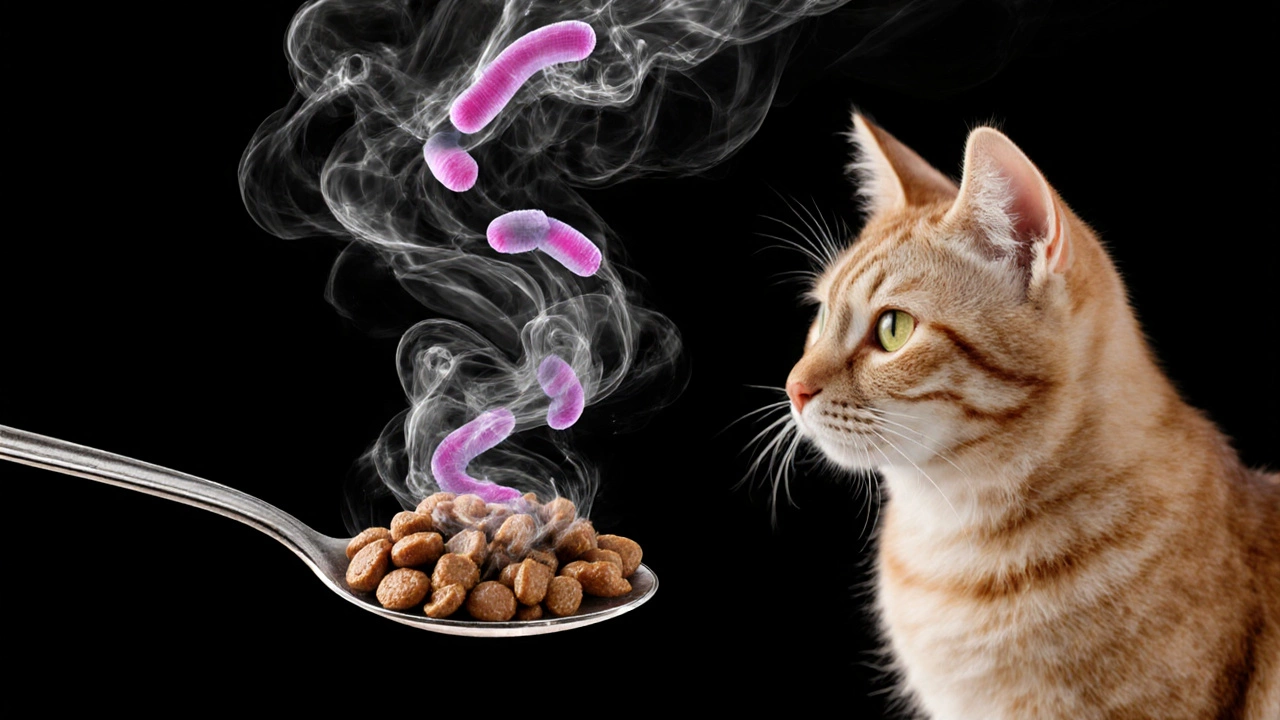
Myth vs. Fact: Wet Cat Food Spoilage
There’s a lot of misinformation out there. Let’s clear it up:
| Myth | Fact |
|---|---|
| “My cat eats it right away, so it’s fine to leave it out all day.” | Cats often nibble over hours. Bacteria grow fast-even if your cat doesn’t finish the bowl. |
| “If it smells okay, it’s safe.” | Bacteria can be present without a strong odor. Smell isn’t a reliable indicator. |
| “Refrigerating it for a week is fine.” | After 3 days, nutrient loss and bacterial risk increase significantly. |
| “Microwaving kills all the bad stuff.” | Microwaving heats unevenly. Some parts stay cold and unsafe. It also destroys nutrients. |
| “Leftovers in the can are okay.” | The metal can leach metals and oxidize the food. Always transfer to a sealed container. |
What about unopened cans?
Unopened cans have a shelf life of 2 to 5 years, depending on the brand and storage. Always check the “best before” date on the bottom. Store cans in a cool, dry place-not above the stove or in a damp garage. Once the date passes, the food isn’t necessarily dangerous, but the nutrients degrade. Protein quality drops, and vitamins like taurine (essential for cats) break down over time.
If a can is dented, bulging, or leaking, throw it out. These are signs of botulism risk, a rare but deadly condition for cats.
Final tip: Watch your cat’s habits
Your cat knows more than you think. If they turn up their nose at food they used to love, it’s not a mood swing. It’s instinct. Trust it. A cat who walks away from a bowl isn’t being fussy-they’re avoiding something that could make them sick.
Wet food is a great way to keep your cat hydrated and fed with high-quality nutrients. But its freshness window is short. Treat it like fresh meat in your own fridge-because that’s what it is. A little attention to storage saves you time, money, and stress in the long run.
How long can wet cat food sit out before it goes bad?
Wet cat food should not sit out for more than 1 to 2 hours if the room temperature is above 20°C (68°F). After that, bacteria like Salmonella and E. coli can multiply to unsafe levels. In cooler weather, you might stretch it to 4 hours, but it’s still risky. Always remove uneaten food after an hour if you’re unsure.
Can you refrigerate opened wet cat food?
Yes. Transfer leftover food to an airtight container and store it in the fridge. It will stay safe for up to 3 days. Don’t leave it in the open can-it can affect taste and safety. Always label the container with the date and time you opened it.
Is it safe to microwave leftover wet cat food?
It’s not recommended. Microwaves heat unevenly, creating hot spots that can burn your cat’s mouth. They also destroy key nutrients like taurine and B vitamins. If you need to warm food, place the container in a bowl of warm water for 5-10 minutes instead.
What should I do if my cat eats spoiled food?
Monitor your cat closely for vomiting, diarrhea, lethargy, or loss of appetite. If symptoms last more than 12 hours, contact your vet. Most cats recover from small exposures, but dehydration and secondary infections can happen quickly. Bring the food container to the vet for reference.
Can you freeze wet cat food?
Yes, freezing is a great way to preserve leftovers. Portion food into ice cube trays or small containers, then freeze. Thaw in the fridge overnight. Never microwave from frozen. Let it sit at room temperature for 10-15 minutes before serving to make it more appealing to your cat.
